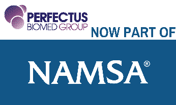Abstract
Aims: To develop a semi-high-throughput ex vivo mucosal model for determining efficacy and toxicity of antiseptics.
Methods and results: Explants (5 mm) from freshly excised, porcine vaginal mucosa were infected with methicillin-sensitive Staphylococcus aureus (1 × 10(6) CFU) at the epithelial surface for 2 h. Haematoxylin and eosin staining revealed healthy uninfected tissue and only minor disruptions in tissue infected with methicillin susceptible Staph. aureus (MSSA), which remained in outer epithelial cell layers. After 2 h infection, 10 μl of chlorhexidine digluconate (CHG, 3%), povidone-iodine (PI, 7·5%), octenidine dihydrochloride (OCT, 0·1%) or polyhexamethylene biguanide (PHMB, 0·1%) was applied. Antiseptics significantly reduced MSSA (1-4 log10 CFU/explants) after 0·25 h to 4 h. CHG, PHMB and OCT exhibited persistence at 24 h. In broth culture, CHG 0·012% and PI 0·625% achieved >6 log10 reductions at 2 h. PI-based formulations were more efficacious than unformulated PI. PI-based formulations exhibited no significant cytotoxicity on explants using an MTT assay.
Conclusions: All antiseptics tested in the mucosal MSSA infection model reduced MSSA. CHG and PI were more potent in broth culture.
Significance and impact of the study: We developed a semi-high-throughput mucosal model that can identify compounds or formulations with promising antimicrobial and limited cytotoxic properties.
